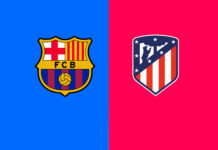The stories behind the two finalists of this year’s English FA Cup final are worlds apart. Neither Arsenal nor Chelsea have far to travel to London’s centerpiece football cathedral of Wembley for the final domestic fixture of the season, but while Chelsea will have the winds in their sails from a deserved 6th Premier League crown, Arsenal have very little to showcase for their efforts, with even the bare minimum of a crucial top 4 placing denied to them by a resilient Liverpool on the final weekend of the Premier League’s marathon.
FA Cup Final Preview
And so the scene is set between these two local rivals; one club searching for their 2nd League and FA Cup double victory (the last being in 2009/10), and the other searching for something to apply polish onto the first season finishing outside the top 4 since 1995/96.
Below we preview the final of the FA Cup 2016/17.
Chelsea: All that glitters is blue
What a difference 12 months makes. Jose Mourinho’s triumphant return to Chelsea was completed in 2014/15 with a resounding 1st place finish in the Premier League. 12 months later, his 2nd spell at Stamford Bridge was cut short after finishing 10th, the first landing outside the top 6 since finishing 11th in 1996/96. Another 12 months later, new manager Antonio Conte led his well tuned squad to a superbly crafted campaign earning them another 1st place finish. To say their performances have been erratic is an understatement, and the Italian has been outspoken in recent media lamenting his club’s inconsistency and need to improve their ability to compete at the same high standard in forthcoming seasons.
Conte’s team were a well-oiled engine in league terms. Their 13 game winning streak from October to December 2016 was critical in creating an unassailable lead at the top of the table from November to the final weekend in May. Suffering relatively few injuries was a key aspect in Conte being able to focus effectively on getting his squad optimised to deliver a near record breaking season. Their 93 point finish is 2nd only to Mourinho’s star studded Chelsea in 2004/05, who managed 95 points that year. Conte’s Chelsea also delivered 30 wins, which is a new record.
The FA Cup went largely to plan as well. Chelsea were able to rotate extensively in the earlier rounds, allowing squad talents like Michy Batshuayi the opportunity to both play and feature on the scoresheet. Victories over Peterbrough (4-1), Brentford (4-0) and Wolves (2-0) were followed by a tense win over Manchester United (1-0) and a thrilling semifinal against Premier League runners up Tottenham (4-2). Conte’s side are in their 12th FA Cup final overall, their first since 2011/12. Chelsea have won their last 4 finals; their most recent defeat in a final came in 2001/02, where Freddie Ljungberg inspired Arsenal to a 2-0 victory over the Blues.
Arsenal: All is not well behind the balance sheets
If the metric to judge Arsenal as a club was it’s off-pitch performances as an administrative entity and financially sound organisation, then all one need do is examine its profits, cash on hand balance and transfer spending patterns to see evidence that the club is certainly in rude health. But to what end? Are the footballing achievements genuinely undermined by the inability to compete with other richer clubs, or should Arsenal look to the title win of Leicester City and the emergence of rivals Tottenham as a clear signal that the cap on their ambition is largely self imposed?
2016/17 broke all the wrong records for the club. The first season outside the top 4 for Arsene Wenger’s Arsenal since he joined the club in 1996. Their 75 points is consistent with their 73 point average for the last 10 seasons, but Arsenal didn’t account for an improved Liverpool, a much improved Tottenham and a far more congested battle for their usual 4th place. Add the team’s humiliation at the hands of Bundesliga champions Bayern Munich in the Champions League and the FA Cup, while an opportunity for silverware, represents a fine thread by which to hang the season’s valuation. Wenger has expressed little regard for any danger to his job, despite growing discontent amongst fans and the threat of changes at senior level with Uzbek-born businessman Alisher Usmanov making a £1bn bid for majority shareholding of the club.
Arsenal’s FA Cup run was typical of their usual approach to their tournament. Victories over Preston (2-1), Southampton (5-0), Sutton (2-0) and Lincoln (5-0) resulted in a tense semifinal against Manchester City (2-1), which was won in extra time, having spent much of the game sustaining many an attack produced by Pep Guardiola’s side. Arsenal are in a record 20th FA Cup final overall, their first lifting the trophy two years ago in 2014/15. Wenger’s side have won their last 5 finals, and are seeking a record 13th win; their most recent defeat in a final came in 2001/01, where late goals from Michael Owen reversed Ljungberg’s opener to give Liverpool a 2-1 win and one of three trophies that season.
Tactical Focus and Players of Interest
Ironically, Arsenal played a small part in Chelsea’s dramatic turn of title winning form; back to back defeats against Liverpool and in particular, Arsenal, appeared to turn the Italian manager’s temperament to a critical tactical shift in the following league match against Hull that kicked off the 13 game winning streak. The shift involved a crucial adaptation to the en vogue formation of 3-4-3, which allowed Chelsea to maximise their ability to leverage their obvious strengths in midfield, hold a narrower shape, while giving strong wide forwards like Eden Hazard and Willian licence to cut inside from wide positions. Conte has hardly deviated from this for much of the season, and much of his talented squad have found the system perfectly suited to their capabilities.
Arsenal in contrast, have recently adopted a similar variant of Chelsea’s shape into a 3-4-2-1, which has been a key driver of the improvement in their form at the final hurdles of their league campaign. The system hasn’t always seemed to naturally suit all the players at hand, particularly defensively, but its pairing of Alexis Sanchez and Mesut Ozil alongside each other behind Olivier Giroud appears a devastating and prolific configuration for their attacking talents.
For Chelsea, they’ll be highly interested in creating overloads on the flanks to take advantage of a perceived weaknesses in the outside centre backs for Arsenal. Hazard and Willian will be highly reliant on the likes of Marcus Alonso, Victor Moses, Cesar Azpilicueta or whoever occupies the wide positions to assist in the job of drowning out the industry of Alex Oxlade-Chamberlain, Kieran Gibbs or Nacho Monreal in similar areas. If Chelsea manage to get in behind those spaces, expect Hazard, Willian or Pedro (likely off the bench) to cause havoc in attacking areas. This was a massive reason behind Chelsea’s 3-1 against Arsenal in the league in February, and while Arsenal may have changed their approach, their inherent vulnerabilities in these respects may still remain.
As usual, N’Golo Kante’s defensive output, and importance to the core of Chelsea’s strength in defence and confidence to push forward in attack means he will be a critical player for the Premier League champions, but it remains to be seen if Conte will choose Nemanja Matic or Cesc Fabregas to partner him. If the semi-final against Tottenham was a guide, it’s likely that the Serbian will start as a thought to dominate the risks posed by Arsenal through the middle, and offering defensive support to the threat of Sanchez and Ozil. But should Chelsea run tepid in attacking respects, expect the former Arsenal and Barcelona midfielder to enter the fray and get another chance to continue his recent run of form.
Arsenal will be hopeful that Alex Oxlade Chamberlain can pass fit before the final; the change in system has managed to find a great way to leverage his blend of defensive industry and direct attacking. His performance in the semi-final vs Manchester City was particularly indicative of this, and he’ll be a critical part of shutting down any joy expected to be enjoyed by Alonso and Hazard alike. Similarly, they’ll be hoping Per Mertesacker somehow produces a once-off masterclass the equivalent of suspended Laurent Koscielny. German Shkodran Mustafi has deputised relatively well for the Frenchman in recent matches, but it’s as yet unclear if he will be fit for the cup final. In midfield, it’ll be interesting to see how Aaron Ramsey and Granit Xhaka perform, particularly the latter. Arsenal’s left hand side appears the most vulnerable, and where Monreal and Gibbs struggle to contain Chelsea, Xhaka may be the most crucial cog to provide a counter argument.
It goes without saying of course that Alexis Sanchez is a pivotal player to the final story for Arsenal; despite reports to the contrary, his apparent disillusionment with the state of affairs at the club hasn’t affected his performances of late, with 4 goals and 1 assist in all competitions in May.
FA Cup Final Prediction
The final represents an intriguing battle of mentality. For Chelsea, the opportunity to add to both history and known success. Antonio Conte is also not typically the kind of manager to take opportunities like this lightly; rest assured he’ll be motivated to win.
For Arsenal, the motivation ironically appears even more a challenge to solve. Will Arsenal really find a way to pick themselves up following a numbing blow to the league campaign? The dust has barely settled on their final league placing and while there is much context to consider against their performance (ironically a points improvement over 2015/16), the reality is that the league table suggests they didn’t heed enough warnings to improve as they should have relative to the improvements in rival clubs.
Then there’s the FA Cup itself. A trophy steeped in English history and tradition, coloured by the romance of special finals of old. Chelsea have won their last 4 finals; Arsenal their last 5. Arsenal have a chance to win a record 13th, too.
The tactical battle itself should be intriguing, given the manner in which both sides have adapted their systems and player application over the course of the season. From Arsenal’s 3-0 win in September, to Chelsea’s 3-1 response in February, to Saturday’s final, it’s likely we’ll have seen three very different tactical chalkboards by the time the result is known in Wembley.
There are reasons to give Arsenal considered credit. Sanchez and Ozil are a potent pairing for any defence to handle and they’ll take some stopping. But Chelsea arguably have a stronger midfield, more capable of managing both the game and the ball; Kante and Matic are also seasoned midfielders familiar with the nuances of defensive midfield work in supporting battles both wide and central. Unless the Arsenal midfield produces an above average performance, it’ll be reliant on its wide players to produce most of the supply to their attack. And in wide areas, Chelsea are quite strong, too. Add to this Chelsea’s array of options from their bench to offer like for like replacements (eg Pedro) or genuine changers to the pattern of play (eg Fabregas) and it becomes to difficult to argue against another victory for the Blues.
Arsenal may well lift the trophy again on Saturday. But given that the possibility of doing so does little to change the merit of their season in some respects, the hunger and quality of Chelsea is more likely to colour the ribbons blue on the 2016/17 FA Cup.









